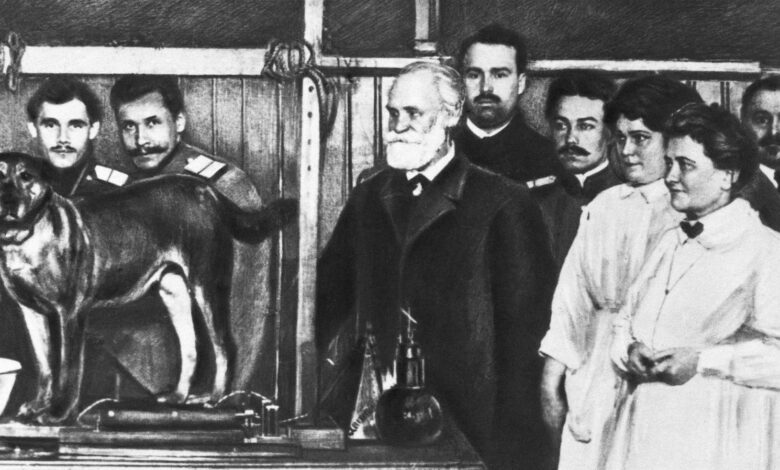A Better Way Of Managing Chronic Pain—Courtesy Of Pavlov

Chronic pain is a common and challenging issue that many people face on a daily basis. As a former primary care physician, I have firsthand experience in dealing with patients who struggle with persistent pain. For years, the medical community has focused on finding ways to completely eliminate pain through various treatments such as medications, physical therapy, and surgeries. However, it is not always possible to completely abolish pain, and long-term use of medications like opioids can have negative consequences.
Fortunately, there are new and innovative approaches to managing chronic pain that focus on changing how people perceive and experience pain. A recent study led by neuroscientist Susanne Becker has shown the potential to uncouple the sensation of pain from the emotional and cognitive experience of pain. Drawing inspiration from Ivan Pavlov’s work on conditioned reflexes, Becker and her team conducted experiments to explore how pairing pain with rewards could alter people’s perception of pain.
In the study, participants were exposed to bursts of painful heat on their thumbs, sometimes followed by a monetary reward and other times with no reward. Through repeated pairings of pain and reward, the researchers found that the participants who received rewards with the pain reported a weaker pain response over time. This phenomenon, known as motivational opponency, suggests that associating pain with positive experiences can reduce the emotional and cognitive impact of pain.
Interestingly, the study also revealed that people actually became more sensitive to pain after the Pavlovian pairings. This heightened sensitivity may be attributed to the participants interpreting the painful stimuli as indicators of impending rewards. While the pain was still present, the participants were able to reframe their emotional and cognitive responses to the pain, making it less bothersome.
This research offers a new perspective on managing chronic pain for individuals who may not find relief through traditional medical interventions. By working with pain experts to explore strategies for reducing the emotional and cognitive impact of pain, individuals can learn to live more comfortably with persistent pain. While we may not always be able to eliminate pain, we can change how we perceive and experience it, ultimately improving our quality of life. In today’s fast-paced world, it can be easy to feel overwhelmed by the constant noise and distractions that surround us. From our smartphones buzzing with notifications to the never-ending stream of emails in our inboxes, it can be challenging to find moments of peace and quiet in our daily lives.
However, finding time for solitude and silence is essential for our mental and emotional well-being. Research has shown that spending time alone can help reduce stress, improve focus, and increase creativity. In fact, some of history’s greatest thinkers and artists, such as Albert Einstein and Virginia Woolf, credited their most profound ideas and creations to moments of solitude.
But in a society that values constant connection and productivity, how can we make time for solitude in our busy lives? Here are a few tips to help you carve out moments of silence and reflection in your daily routine:
1. Schedule time for solitude: Just as you would schedule a meeting or appointment, block off time in your calendar for solitude. Whether it’s a few minutes in the morning before the rest of the household wakes up or a quiet walk in nature during your lunch break, make time for yourself a priority.
2. Disconnect from technology: In a world where we are constantly connected to our devices, it can be difficult to truly unplug. Make a conscious effort to turn off your phone, computer, and other electronic devices during your moments of solitude. This will help you focus on being present in the moment and tuning into your own thoughts and feelings.
3. Practice mindfulness: Mindfulness is the practice of being fully present in the moment without judgment. Take a few deep breaths, close your eyes, and focus on the sensations around you. Whether it’s the sound of birds chirping outside your window or the feeling of the warm sun on your skin, practicing mindfulness can help you cultivate a sense of calm and clarity.
4. Engage in activities that bring you joy: Whether it’s reading a book, going for a run, or painting, engage in activities that bring you joy and allow you to recharge. Spending time doing things you love can help you reconnect with yourself and tap into your creativity.
5. Embrace solitude as a gift: Instead of viewing solitude as a burden or something to be avoided, see it as a gift. Solitude offers us the opportunity to reflect, recharge, and connect with our inner selves. Embrace the quiet moments and use them as a time for self-discovery and growth.
In conclusion, finding moments of solitude in our busy lives is essential for our overall well-being. By making time for ourselves, disconnecting from technology, practicing mindfulness, engaging in activities that bring us joy, and embracing solitude as a gift, we can cultivate a sense of peace and clarity in our daily lives. So take a deep breath, find a quiet corner, and enjoy the beauty of solitude.




